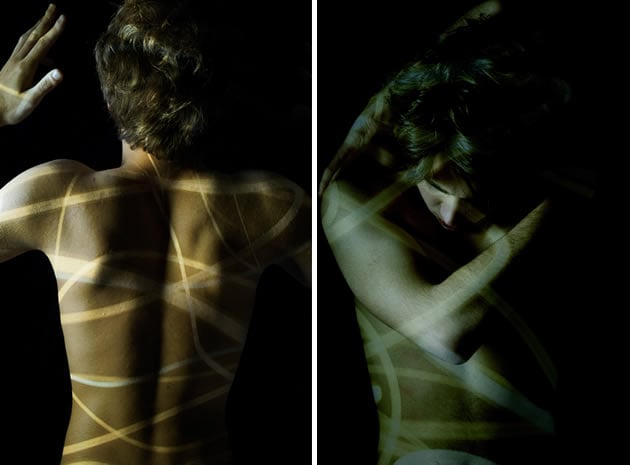Last Updated on April 2, 2023
This article features Level 2 NCEA Photography by Jessica Louise of Long Bay College, Auckland, New Zealand. Jessica was awarded Excellence for this project.

Light is an essential element of photography. This portfolio submission explores the use of light as the medium required to record images and as subject matter for the photographs taken. Jessica has used light in various ways to ‘paint’, creating images that depict movement and expression.
Light is important in relation to the technical aspects of photography. Capturing light (and specifically moving light) in the dark studio environment requires a tripod and a camera set on a slow shutter speed. To capture the motion, long exposures are required. The contrast between the play of light and the dark background in all images creates a unified body of work as well as creating images with visual impact. The limited colour palette allows the light and colour in the images to stand out.
This NCEA Photography submission experiments with a wide range of photography conventions. As both a Painting and Photography student, Jessica wanted to find a connection between her two projects. This led her to the art of ‘light painting’. To create this portfolio submission a lot of experimenting was required. The art of light painting involves creating images by capturing and recording the play of light.
In this project, the play of light has been used in conjunction with the human body. The images therefore create expression through the use of light and the interaction it has with the portrayal of the body.
Jessica tackles style in her work through a number of different interpretations, influenced by various artist models. The idea of light painting was inspired by work from the photographer Patrick Rochon.
Rochon’s The Light Painting KATA series is of images created using light and movement, inspired by martial arts. Rochon mentions “the trace we create and leave behind”. This aspect of his work can clearly be seen in Jessica’s project.
Rochon also refers in his work to the “form and order of the process” of kata (a Japanese term for ‘way of movement’ or ‘detailed choreographed patterns of movements’). This can clearly relate to the process of light painting. To create successful images the artist must understand what they are photographing and how they can go about capturing images in the studio environment. The importance of understanding how photography works is illustrated in a project such as this.

Many of these pictures (from the first panel of the portfolio) are created using layering and fading effects on Adobe Photoshop. Bagrad Badalian’s Insanity series inspired the sequence of images in the second line.





These final images are from the end of her folio. Jessica aims to combine Rochon’s methods of a sense of movement and motion of light painting, with the experimental ideas of Bagrad Badalian’s figurative work.
This article was written using information provided by Jessica Louise. If you enjoyed this photography portfolio, you may wish to view our other Featured Photography Projects from high school students around the world!

